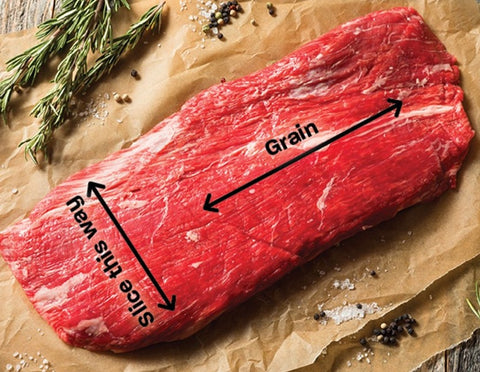Welcome to Goodparla’s ‘Butcher’s Corner’ – where we discuss the varied cuts of meat you get when we take our beef to the butcher. Goodparla is proud to be partnered with a USDA certified butcher, right here in Missouri. Having a USDA certified butcher ensures that all beef that is processed adheres to the highest standards of cleanliness, safety and quality.
So today in the Butcher’s Corner, we want to talk to you about a gem of a cut called Tri-Tip. Tri-Tip is a triangular cut of beef that comes from the bottom (“tip”) sirloin; hence the very clever name of ‘Tri-Tip.’ However, it is a cut of meat that can go by many names and is most widely known as ‘Santa Maria Steak,’ but can also be known as ‘the California cut,’ ‘sirloin tip,’ and ‘triangle cut.’
Now, a quick dive down the rabbit hole – is tri-tip a steak or a roast? The answer is both. Now, that might not seem so simple after all; however, that’s why we’re here! Whether you have a roast or steaks on your hands has nothing to do with where the meat comes from on the animal, but rather the way the meat is cut and packaged raw. Tri-tip steaks are cut from the roast and packaged raw as individual steaks. A tri-tip roast, is the whole cut of meat, weighing about 2 to 3 pounds. The roast is cooked whole and then sliced into individual servings – much like a steak. Seems like a lot of semantics, if you ask us, seeing as how either way will get you the same incredible flavor and results with adjusted cooking methods and times.
Tri-tip is an amazingly flavorful roast that boasts a bold, beefy taste and an incredibly tender texture. Why does it taste so good? Tri-tip has great marbling – aka, the muscle fat found in beef cuts – and this type of fat adds an insane amount of flavor once the beef is cooked and the fat literally melts into the meat as it cooks.
Tri-tip cooks well in the oven, as well as the grill. One of the biggest mistakes you can make when cooking Tri-tip is to overcook it! Due to being a leaner cut of meat, if it cooks too long, it becomes very tough and quite unpalatable in our minds. Medium-rare is our preferred method for most steaks, but definitely for Tri-tip – whether it’s in roast or steak form! We find tri-tip to be extremely versatile and it takes well to marinades, dry rubs and even minimal seasonings. You really can’t go wrong when making this roast and because you can prepare it so many ways, its sure to be a crowd pleaser at your family’s dinner table.
To make sure that your hard work preparing your Tri-tip doesn’t go to waste, make sure you cut the meat against the grain once cooked. What does that mean, exactly? The ‘grain’ of the meat is referring to the direction the muscle fibers run within the piece of meat – the muscle fibers are parallel to one another creating a fine grain just like you’d see in a piece of wood. Now, to cut against the grain means you cut across the muscle fibers – you do not want to cut in the same direction of the muscle fibers, but across them, as seen below.

When you cut across the grain, you get beef that resembles sliced brisket and if you cut with the grain, you will find your roast has become stringy; and while it doesn’t necessarily detract from flavor, you may find you lose the melt-in-your-mouth texture and that your roast has now become rather chewy – which is what we want to avoid!
We hope you have fallen in love with Tri-tip, just as we have! If you’re looking for a great recipe to make the most flavorful, melt in your mouth Tri-tip, check out our recipe here.

